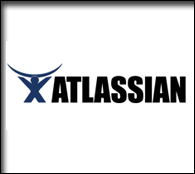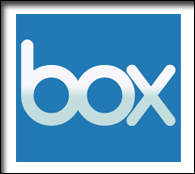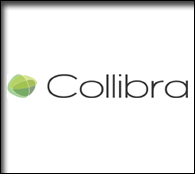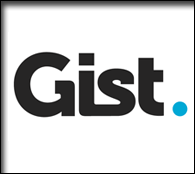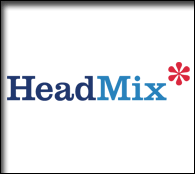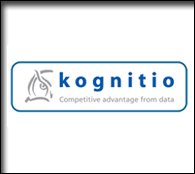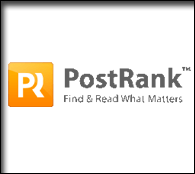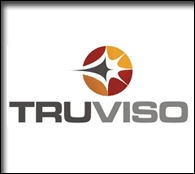Enterprise 2.0 as part of a larger theme
by Eric Norlin on Aug.04, 2008, under conference topics, defrag "theory"
(Alternative title of this post: “Is Enterprise 2.0 b*llsh*t?”)
There’s been a bit of rumbling lately about enterprises not being satisfied with their “enterprise 2.0″ implementations — specifically, a McKinsey report that only 21% of respondents are satisfied with their implementations, while 22% are clearly dissatisfied (some to the point of abandoning their projects). Defrag obviously touches on a lot of “enterprise 2.0″ topics, though I do think that enterprise 2.0 is just a piece of a much larger topic area. All of which led me to the idea for this post — and the incendiary alternative title. So, let’s dig in.
The term “enterprise 2.0″ comes from Harvard professor (and past Defrag speaker/friend), Andy McAfee. Without getting into the quagmire of definitions, let’s just assume that “enterprise 2.0″ denotes those tools and technologies used by enterprises that seek to promote collaboration and social networking, while harnessing a lot the enterprise’s unstructured information and emergent structures. These uses occur internally and externally (with customers and partners). The “tools” tend to be blogs, wikis, RSS, social networks — and, increasingly, some platform technologies (that extend the functionality into data mash-ups, etc).
So, let me answer the question: Is enterprise 2.0 b*llsh*t?
In a word: “no.”
However, I do get the sense (and this is all just gut) that the “enterprise 2.0 movement” is about to enter the often hard and trudging “trough of disillusionment” that Gartner made famous. Its a natural progression of technology adoption, and doesn’t reflect on the potentialities of the technology (imho), so much as it alludes to market saturation and the natural cycle that weeds out the marketplace.
Why then, am I so ready to say that enterprise 2.0 is *not* just bunk? Because I believe that it is actually just one piece of a much, much, much larger puzzle.
To explain that, I turn to an analogy (from my experience in the world of digital identity):
“Identity management” is a term that has only been developed (and nearly worn out) over the last 5-7 years. Prior to the development of “digital identity” and “identity management,” the whole space began (way back when) around the idea of authentication, or knowing “who” someone is. The authentication space grew out of (in a tertiary sense) cryptology, as cryptologic keys became a way to “authenticate” a user on a corporate network (think of the RSA key fob that is now nearly ubiquitous). It wasn’t long before authentication (the who) grew out to other areas: where, what, why, how, etc. All of these little pieces were NOT initially seen as part of the larger piece that is “digital identity,” or “identity management” - rather, it took the industry a matter of years to figure that out (I’d like to think that Digital ID World helped to play some small role in that). Before long, “identity” was now something that was enveloping meta-directories, role management, compliance, and a whole host of solutions that never would’ve been seen as part of the “authentication” space in the early days. You can actually chart this progression by examining how the RSA Security conference has grown over the last ten years.
The key to all of this growth in identity (which is now a huge and largely successful space) occurred because the original piece of the puzzle (authentication) came to be seen as part of a much, much larger problem.
And so I believe it is with “enterprise 2.0.”
Defrag’s impetus was the problem of “information overload.” That early mandate led us down a bunch of seemingly unrelated paths (this is, by no means, an all-inclusive list):
Enterprise 2.0:Â Blogs, wikis, RSS, social networking — all of the tools that promote collaboration and harnessing emergent groups and unstructured data.
The Semantic Web:Â You know, you’ve read about it for years - and only recently has the semantic web started to come to fruition. Broadly speaking, semantic web tools and technologies seek to add a layer of meta-data to our existing miasma, thereby opening nearly untold layers of meaning.
The Implicit Web:Â This term (made popular by Brad Feld and Fred Wilson - mostly) really encompasses the idea that there should be tools that utilize your attention to sort and contextualize information more effectively. Some have called it “the lazy web” (which I like), and I usually think of it as “making technology more intuitive” - not in the “easy to use” sense, but in the sense that technology begins to approximate our human sense of intuition.
Collective Intelligence, Next-level Discovery and Mashing things together:Â A fourth bucket that catches a lot of things that you can just sense fit into the space.
My basic thesis with Defrag (and make no mistake, Defrag is a “thesis” that we’re seeking to “prove out”) is that the “success” of all of this depends on our communal ability to come to see all of the related pieces of the puzzle versus getting caught in the trap of trying to take one label (enterprise 2.0), which is already fairly well defined and expand it to include everything.
The whole point of a thesis is solving a big problem: information overload. Now, there are problems with that term in that I think it can inherently add negative connotations (where “overload” is a bad thing), when that shouldn’t necessarily be the case (see Stowe Boyd’s thinking on this). Still, its the best thing we have for now, so let’s run with it.
We’re all drowning in the flow of information: inside and outside of the enterprise, in groups and as individuals, through network effects and user pathways. What we can all sense is simple: If we can build great tool-sets that attack pieces of this problem, we can end up with a future that helps all of us navigate through the river of info more productively, efficiently and enjoyably. Interestingly, this problem *crosses* the enterprise/end-user boundary - and the ground for innovation is beyond fertile.
At this point, I’d like to take a second to say how much great work is being done by “enterprise 2.0″ companies. Let’s not discount the incredibly difficult piece of the puzzle that they’re working on. That said, though, Defrag is about getting that group of people into a room with other, different groups of people that the “e2.0″ folks don’t normally interact with. Let’s “mash-up” (in a meatspace sense) the semantic, implicit and 2.0 folks, mix in some collective intelligence and other things, and see if in our communal discussions we can begin to find the key relational and correlating threads that actually move the space forward — cuz I gotta tell ya folks, just building a better “collaboration platform” ain’t gonna get us there!
Its a big problem, with a big potential solution, and it needs a big, wide open space (like defrag) to explore these things.
That’s why I think “enterprise 2.0″ is part of a larger theme. That’s why I think Defrag is a different kind of place. And that’s why I think you should join us. ![]()
